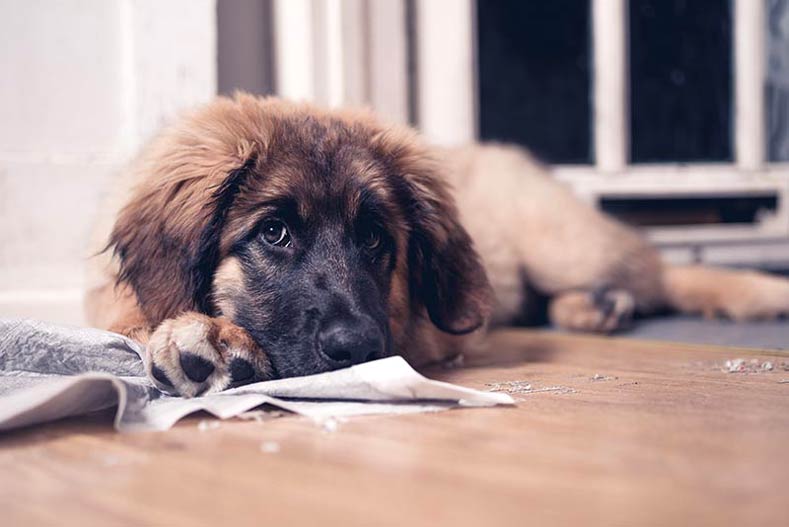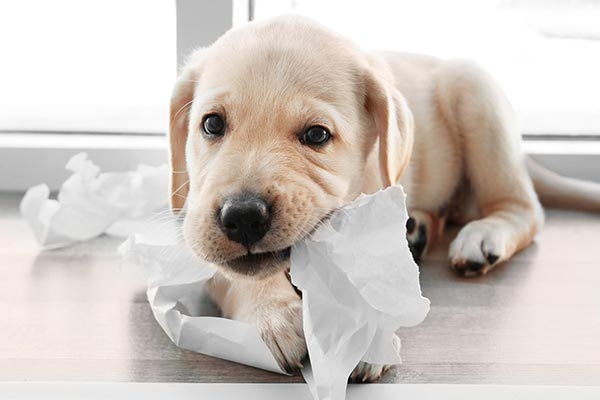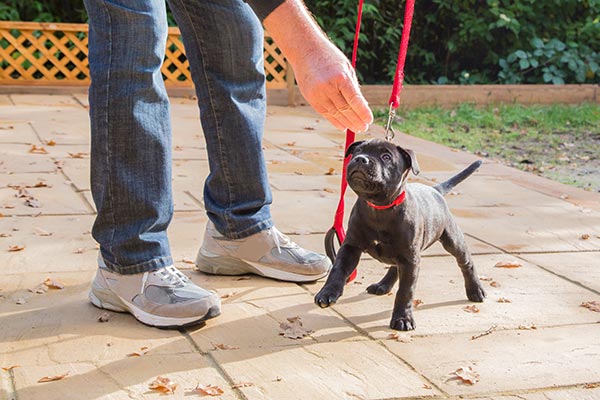
Puppy-proofing should be one of the first things on any new dog parent’s checklist. After all, puppies are curious creatures. They’ll sniff, chew, and swallow things that interest them. Unfortunately, some of those things in your house might be harmful or poisonous to them. Therefore, make sure your home is puppy-proofed before the little one moves in. Realtor Patrick McAloon of Chicago, Ill., offers his helpful tips on making your home pet-friendly for your newest family member.
1. Use barricades
Put baby gates in front of areas or rooms where you don’t want the puppy to come in, or set up a safe area in the house that’s specially prepared for the new puppy and keep him in there. If there are times when no one is at home, you will want to crate your puppy. To teach crate training, give some treats when you put him in the crate. That way the puppy will learn that being in a crate is a positive experience and not a punishment.
2. Lock cabinet doors
Sometimes, puppies are capable of opening lower cabinet doors with their paws, so it is recommended that you put locks on the doors, especially if you keep household chemicals there, which may be harmful for your puppy. Besides the ones in the cabinets, pay attention to chemicals in other areas of the house, such as the garage, backyard, basement, etc.

3. Teething time

Teething is a part of their growing-up process. Unfortunately for the owners, the puppies might chew whatever they can find. Some things that puppies usually like to chew include:
- Electrical cords. If chewed, they can cause electrical injury to your dog. Make sure the floor and low areas where your puppy is free to wander around are also free from electrical cords.
- Food in the garbage can. The smell interests them, so make sure to keep them away from trash bins because eating rotten food can make your puppy sick.
- Books, magazines, newspapers, and other paper products. Try to keep these items on bookshelves or out of reach.
- Furniture, rugs, pillows. Teach your puppy that toys are an acceptable alternative for chewing.
- Shoes. Classic story. I wonder how many dog owners have lost their shoes. Pay attention to where you put your socks, leggings, and pantyhose, too.
- Remote controls, cell phones, CDs, and other electronics. Remove them from puppies’ reach.
- Houseplants. Some plants are toxic to puppies.
To help avoid unwanted incidents, stock up on some toys for your puppy. When choosing toys, take a look at the labels and make sure they are intended for puppies and not for adult dogs. In many cases, you get what you pay for. More expensive toys are usually more durable, so for your puppy’s safety, invest a little bit more in good quality toys. Do not let your children share toys with the puppy because there might be small parts the pup can choke on.
4. Pay attention to large appliances
As mentioned before, puppies are curious and rather adventurous creatures. Always make sure your refrigerator, washing machine, dishwasher, oven, and other large appliances are closed — otherwise your curious puppy might climb in.
5. Only feed them dog food
Many dog owners often feed their dogs off their dining table. Although many types of food are safe for dogs, some can make them sick, or can even be deadly. Never give chocolate to dogs. Although it is a delicacy for us, the alkaloids in chocolate can kill them. Besides chocolate, other food items that you should not give to dogs include raw eggs, grapes, raisins, caffeine, garlic, onions, mustard seeds, and yeast. Tell your children and guests about this rule, too, so they know what’s safe and unsafe to give to puppies.
6. Puppy-proofing means training your puppy
Research, review, and choose training methods that you think most suitable for your puppy. Just like children, they need to be taught what they can and can’t do around the house. Through training and preparations, your home will surely be a safer place for you, your family, and your lovely puppy.

By: Realtor.com team
This article appeared first on “Real Estate News and Insights” from realtor.com.
Want more information on living with pets in your home? Get tips here.


